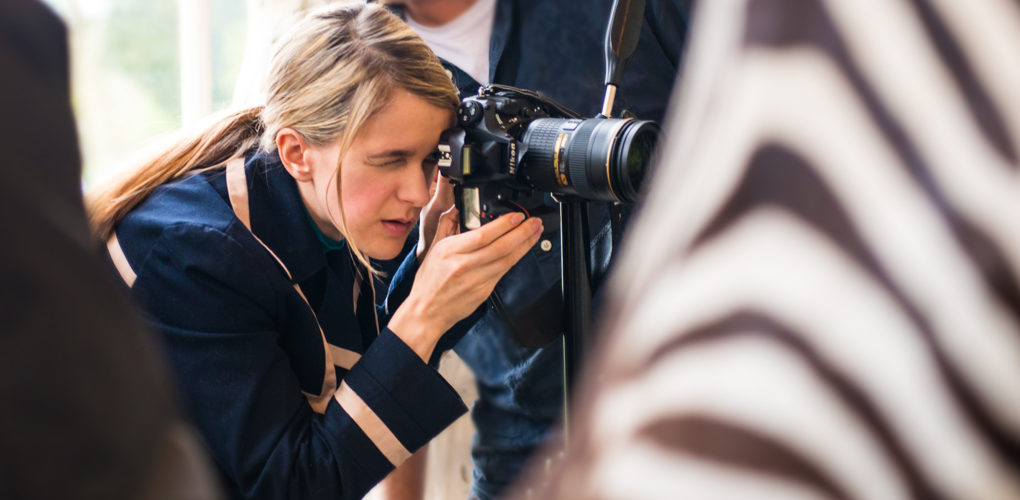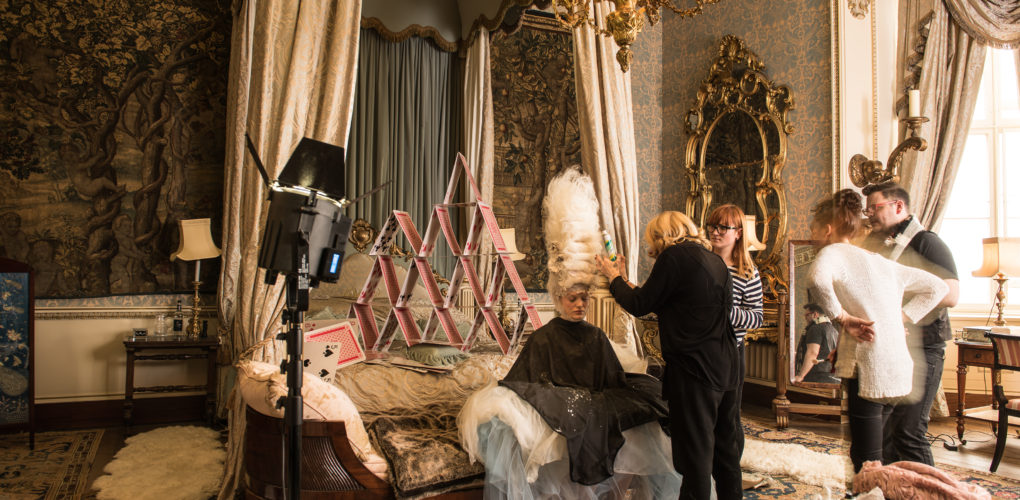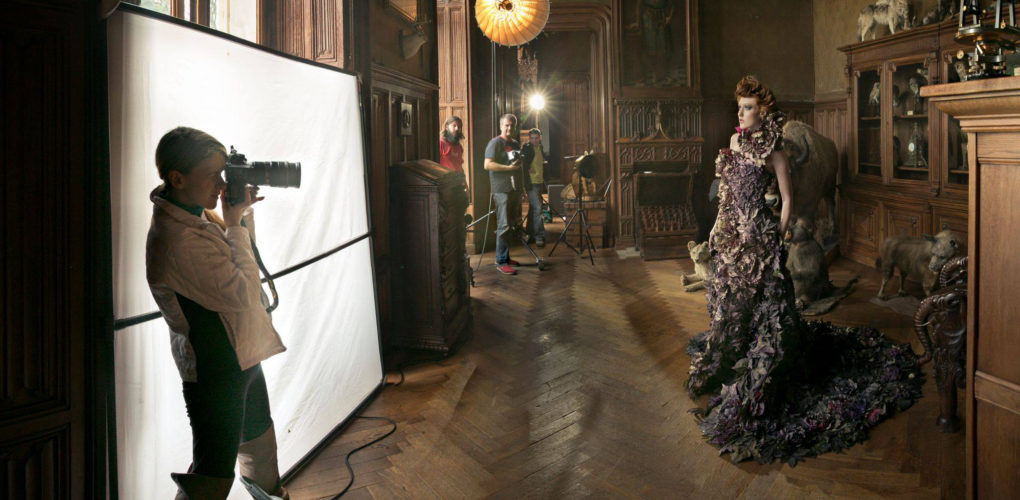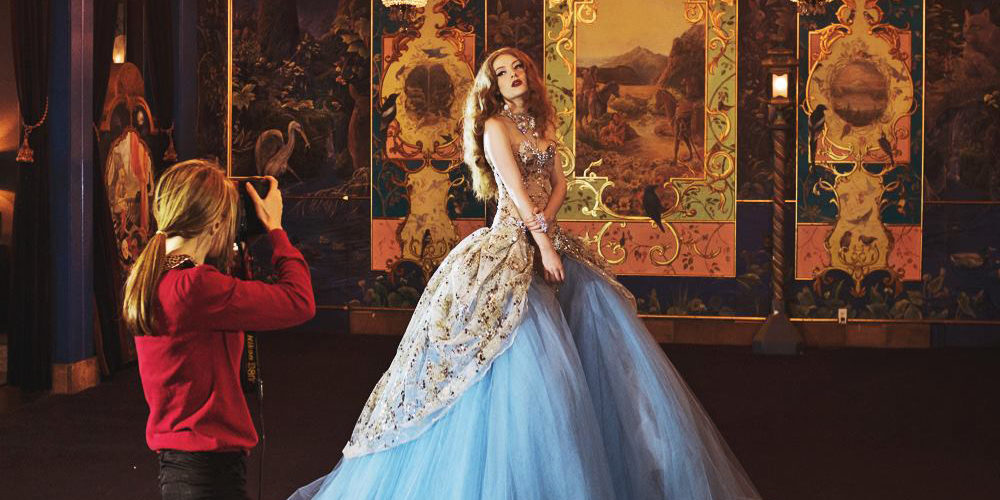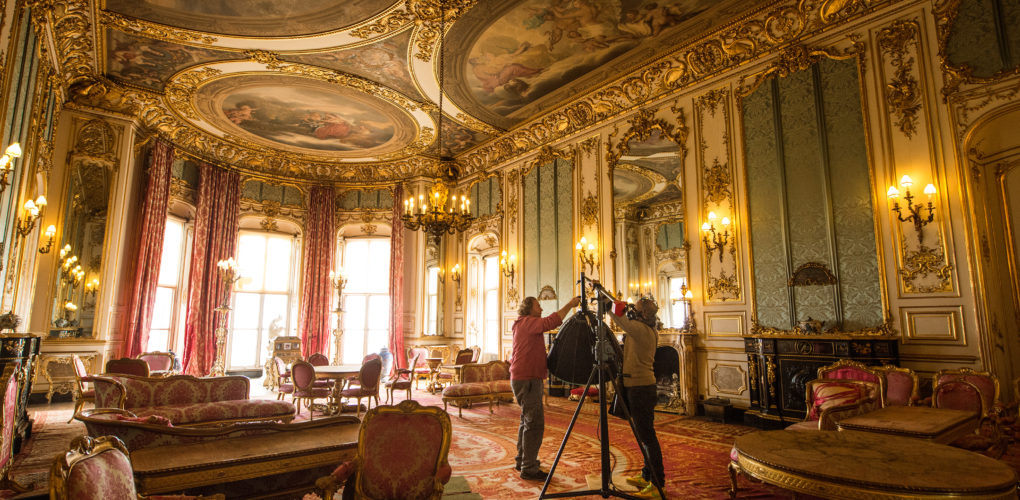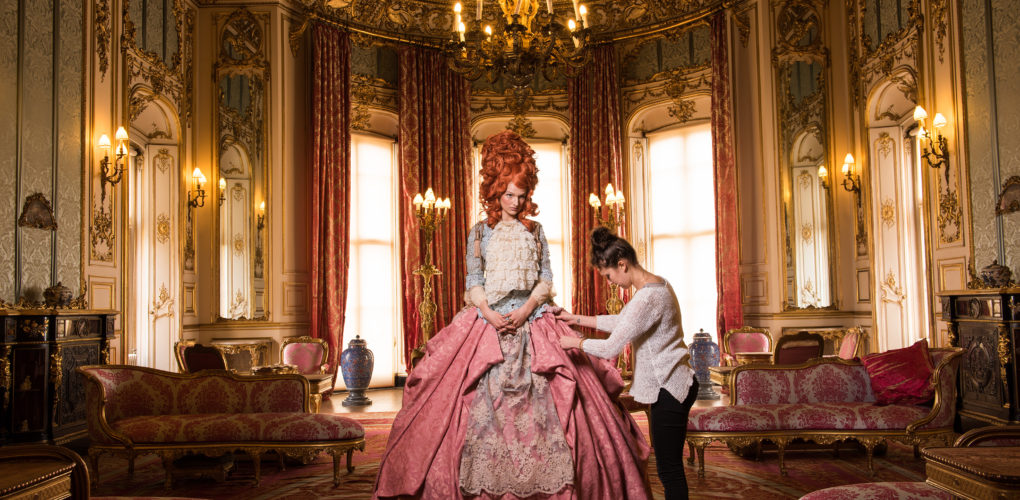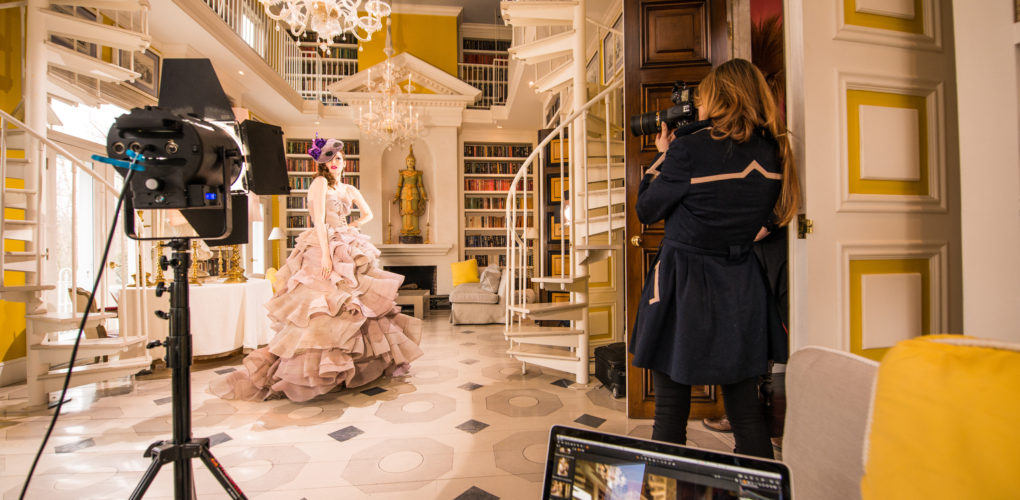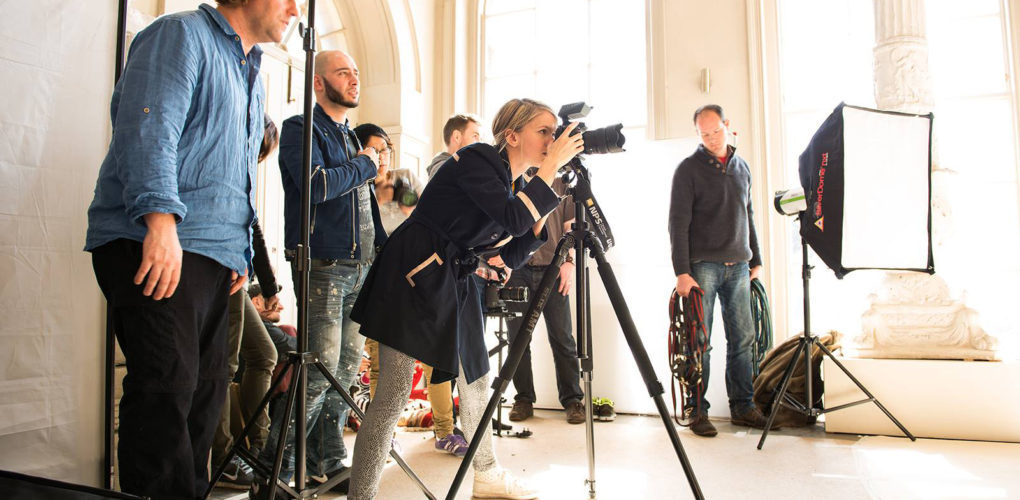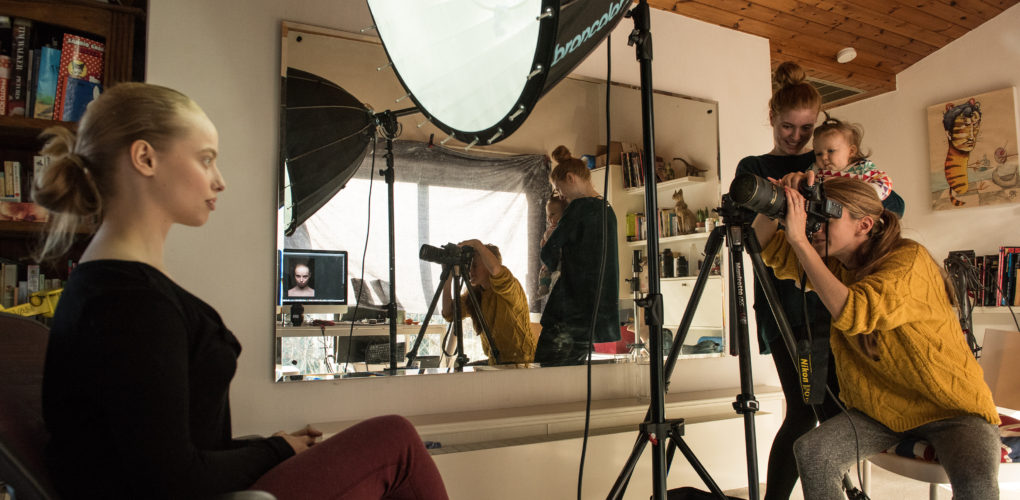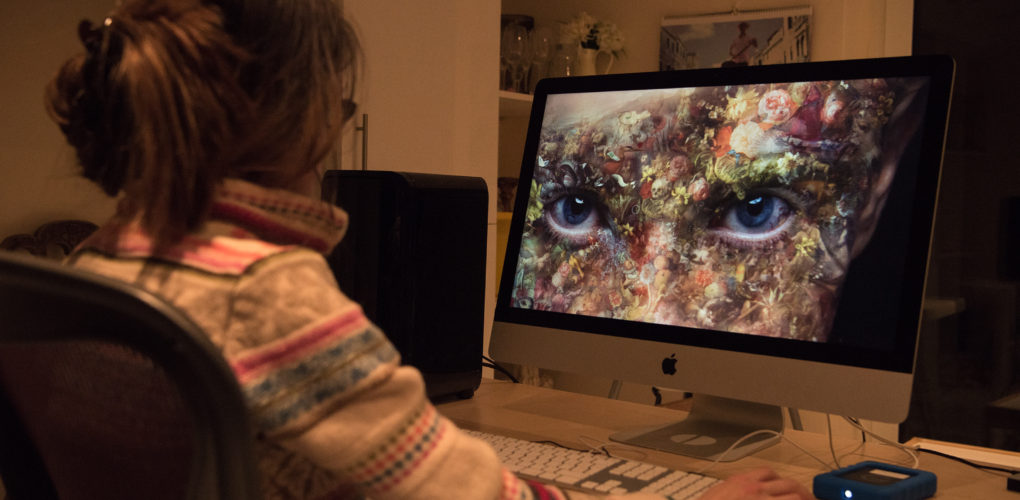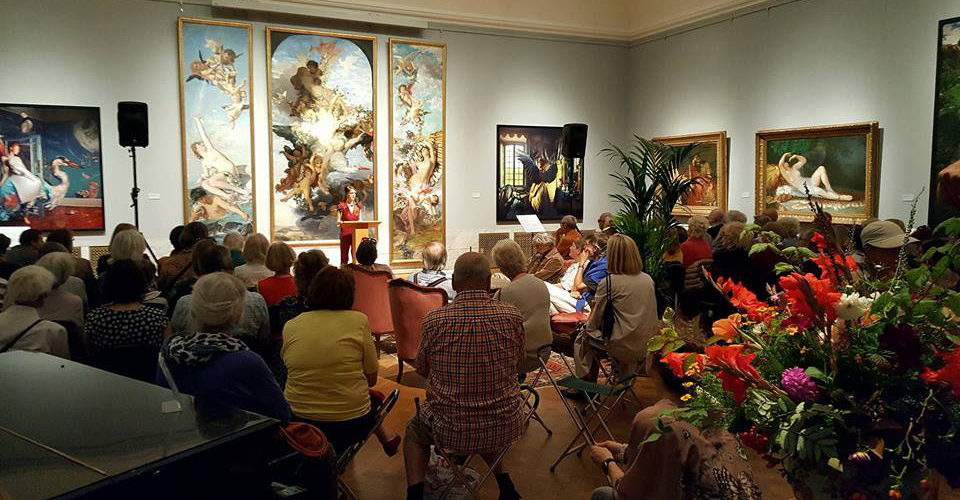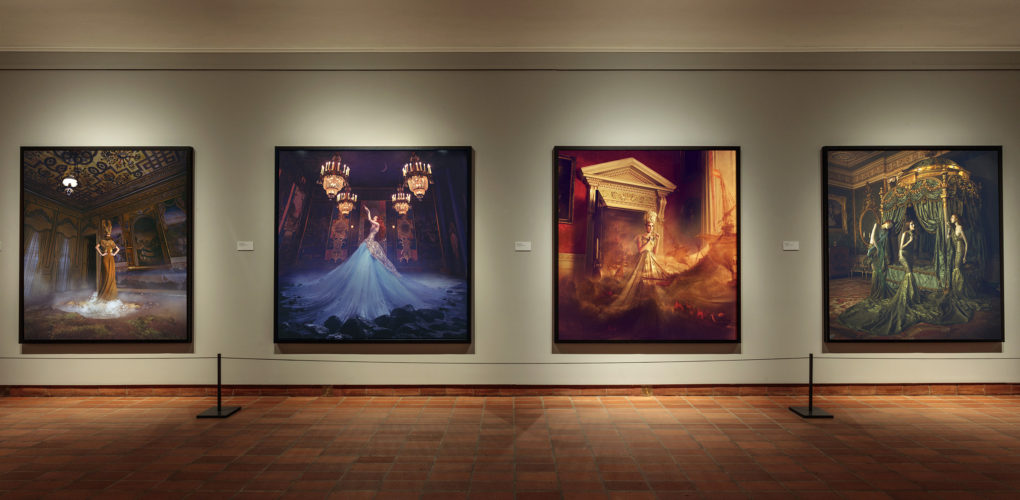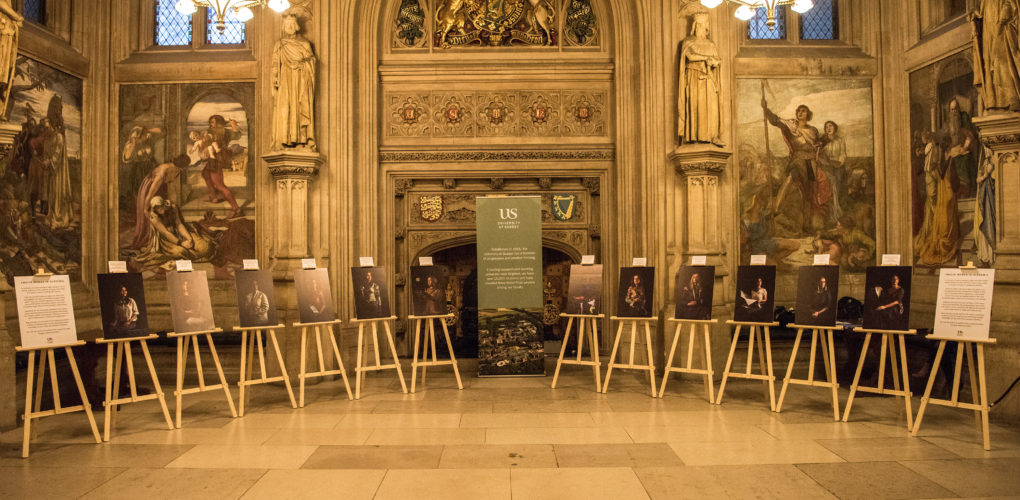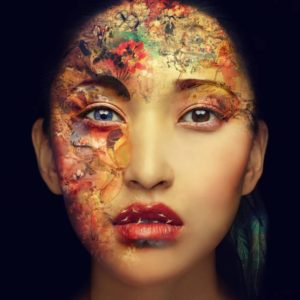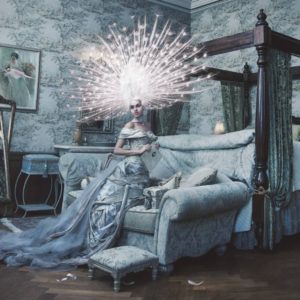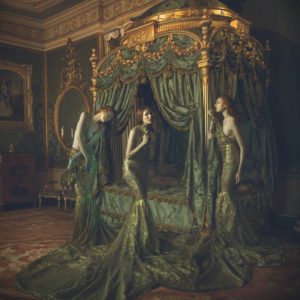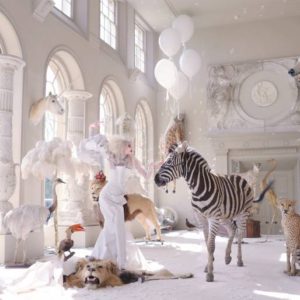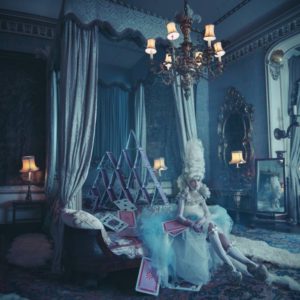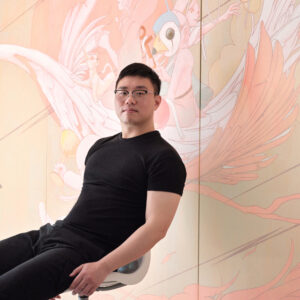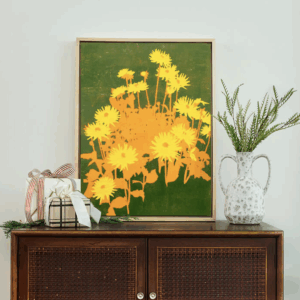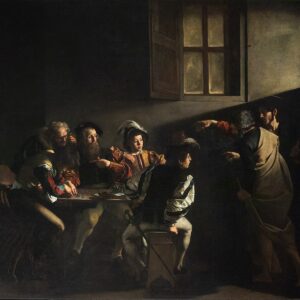One to Watch
 Miss Aniela’s photographs are both real and imagined
Miss Aniela’s photographs are both real and imagined
Miss Aniela (real name Natalie Dybisz) is a British photographer who creates elaborate scenes that blur the boundaries between fine art and fashion. Her series ‘Surreal Fashion’ depicts contemporary models with a classical reference, inspired by Renaissance painting and Dutch masters, shot on location in stately homes across England, Europe and the US. She explores juxtapositions in her works, between nature and manmade, the female form and architecture, and painterly motifs and digital photography.
Miss Aniela was previously named a Saatchi Art One to Watch artist in 2013. She has been exhibited in the Saatchi Gallery during Saatchi Art’s ‘Continental Shift’ exhibition in 2014, the Waldermarsudde Museum in Stockholm, and the Houses of Parliament in London. Miss Aniela’s clients include Nikon, HTC, Yakult, University of Sussex, WedLuxe Mag Canada, and Microsoft. She has also been featured in publications including BBC, El Pais, Plastik Magazine, and NY Arts. She works together with her partner and producer Matt Lennard, and they live in Sussex, UK.
What are the major themes you pursue in your work?
I have long been drawn to surrealism, the female form, and the juxtaposition of nature and manmade. I have always been more interested in real locations than studio settings. In recent years I became particularly intrigued by the depth of detail history in palatial houses, and mixing this with beautiful fashion models to create a banquet of desirable motifs all within one frame. I love to bring together classical and contemporary, and in some of my images I actually pull pieces of classical paintings into my composites to breathe new life into old brushstrokes, in a satirical but meaningful resurrection of art history. My borrowing from 17th and 18th century art makes an explosive extreme in my large-scale piece ‘Bloom Face.’
How did you first get interested in your medium, and what draws you to it specifically?
I began as a self-portraitist, fascinated by the immediacy of digital photography, and the surreal possibilities of manipulation. I loved the way in which ‘reality’ could be molded to become something that looks as if it were from another time or place. I quickly grew addicted to the aesthetic pleasure I got achieving a rich final composite, and then even more so when my works accumulated side by side as if like a tapestry.
I am a photographer who loves to breathe something ‘unphotographic’ into my work – painterly, classical and beyond the photograph. And yet, I find something so much more satisfying in the realism of an actual photograph as opposed to the abstractification of reality in a painting – it is chasing the delicate boundary that is my constant mission.
How has your style and practice changed over the years?
I think there are common aspects to a beginner’s work compared to their later progression. Early images tend to be blocky in composition, a little clumsy perhaps, hit and miss. They can have too much contrast, saturation, or things that don’t look quite right because your ‘eye’ was still in training. Later on I’ve noticed my works becoming more refined, less forced. You become more knowledgeable about image selection, color management, and cropping. Time is the best judge, so the more time that passes and work you create, the better you can curate your own portfolio from across the years. Style comes from applying yourself persistently, long-term. Still, some of your earliest pieces will be your greatest, and telltale elements of your style will be there in your work right from the start.
Can you walk us through your process? Do you begin with a sketch, or do you just jump in? How long do you spend on one work? How do you know when it is finished?
It begins with a ‘hinge’ which may be any one of the ingredients. It might be the location we intend to shoot at, which provides visual inspiration; deciding on which rooms, which pieces of grand furniture I want to spotlight, what kind of styling and model to use. Or I might begin with a costume designer whose designs I love, or, I might begin with a model whom I really want to shoot, and then decide how to get the most impact from them. I use moodboards to communicate with my team. When I work, there is more a sense of flavor that I’m after, rather than a specific sketched composition which I would mainly use when planning a commercial shoot.
From time to time I delve into my archive of past shoots and play around to put together something completely new – this has happened for some of my most popular images.
When I’m editing an image, the journey is both frustrating and exciting. The art of Photoshop compositing is as much about taking away as it is about adding. Some images need barely any editing, but most take time to look cohesive. I usually just ‘know’ when the composition feels satisfied; my partner Matthew provides a helpful second opinion. Unless I’m working on a large-scale piece like ‘Bloom Face’ which took months, most of my images take a couple of days’ actual editing at the longest.
What are some of your favorite experiences as an artist?
Three exhibitions, that are memorable for being distinct or unusual. Exhibiting at the Saatchi Gallery was an amazing moment to have my work appreciated in a physical sense, especially in such a prestigious place. I exhibited recently at the Prins Eugens Waldermarsudde museum in Stockholm, alongside salon paintings, as a ‘contemporary commentary’ to draw on the parallels between their similar illusionistic techniques. I think this is a fantastic coup for digital photography in general. I’ve also just had ‘Twelve Women in Academia’, a series of portraits commissioned by University of Sussex, shown in the Houses of Parliament in London.
I’ve also loved writing my books, staying and dining in all the fabulous locations we use in our shoots (Weston Park, Aynhoe Park and Chateau Challain spring to mind), and the social fun shooting with other photographers everywhere from sunny Lanzarote to the cold winds of Iceland. Creating my bestseller ‘Swan Lake’ is also a favorite time – shot in a ballroom in Seattle, which was actually during a nerve-wracking 3-day live workshop for Creative Live. I also generally appreciate the lifestyle of daily freedom I enjoy with Matthew and our 20-month daughter Lilith.
If you could only have one piece of art in your life, what would it be?
I need to own ‘Mother and Child’ by Ray Caesar. It could well have been a portrait of me, after giving birth to my first child Evan (who was stillborn due to a predicted fatal anomaly). I was that woman laying back proudly up in her tree, resplendent with peace and tranquility and relief. Although the loss was indescribably heart-wrenching, sometimes I look back and envy the curiously cleansing quality of devastation that washed away all my other worries in the world.
